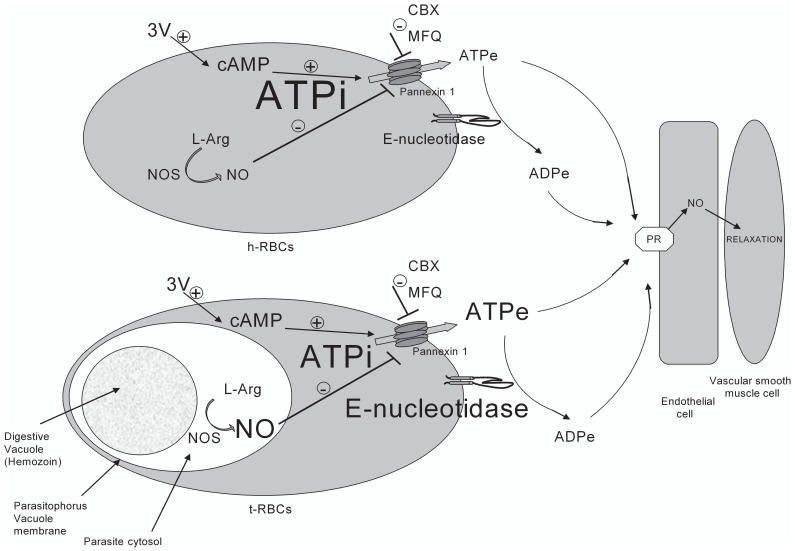Figure 10. Qualitative scheme depicting main differences in 3V-induced ATPe regulation of noninfected and trophozoite-infected RBCs (h- and t-RBCs) and the consequences of ATPe and ADPe accumulation on endothelial mediated vasodilation.
Trophozoite-infected RBCs (t-RBCs) produce nitric oxide (NO) at the site where the parasite is located. A comparison of the responses in both cell types show that time dependent ATPe concentrations are higher in t-RBCs than in h-RBCs, despite higher inhibition of ATP efflux by a relative high NO production, and high ATPe degradation rate by ectoATPase activity.

